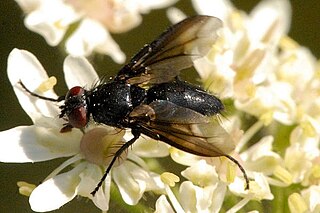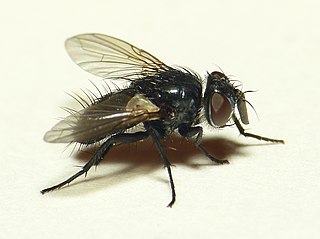Incamyia is a genus of parasitic flies in the family Tachinidae.

Belvosia is a genus of flies in the family Tachinidae.
Calodexia is a Neotropical genus of parasitic flies in the family Tachinidae. Females follow columns of army ants, apparently waiting for cockroaches to be flushed from hiding.
Chrysotachina is a genus of flies in the family Tachinidae.

Leschenaultia is a genus of flies in the family Tachinidae.
Eucelatoria is a genus of flies in the family Tachinidae.
Patelloa is a genus of flies in the family Tachinidae.
Lixophaga is a genus of flies in the family Tachinidae.

Voriini is a tribe of flies in the family Tachinidae. More junior homonyms exist of Wagneria than any other animal genus name.

Dexiinae is a subfamily of flies in the family Tachinidae.

Dexiini is a tribe of flies in the family Tachinidae.

Exoristinae is a subfamily of flies in the family Tachinidae. Most species are parasitoids of caterpillars.

Blondeliini is a tribe of parasitic flies in the family Tachinidae. Larvae are parasitoids of other insects, mostly beetles and caterpillars. Although nearly cosmopolitan, its greatest diversity is in the New World and especially in South America.

Goniini is a tribe of parasitic flies in the family Tachinidae. Members of Goniini are distinguished from other Tachinidae by laying small "microtype" eggs that hatch only after being ingested by a host.

Winthemiini is a tribe of flies in the family Tachinidae.

Tachininae is a subfamily of flies in the family Tachinidae.

Minthoini is a tribe of flies in the family Tachinidae.

Tachinini is a tribe of flies in the family Tachinidae.

Polideini is a tribe of bristle flies in the family Tachinidae. The tribe is unusual for its diversity of hosts, including spiders, scorpions, and centipedes in addition to the usual insect larvae.
Euthelairini is a tribe of flies in the family Tachinidae.











